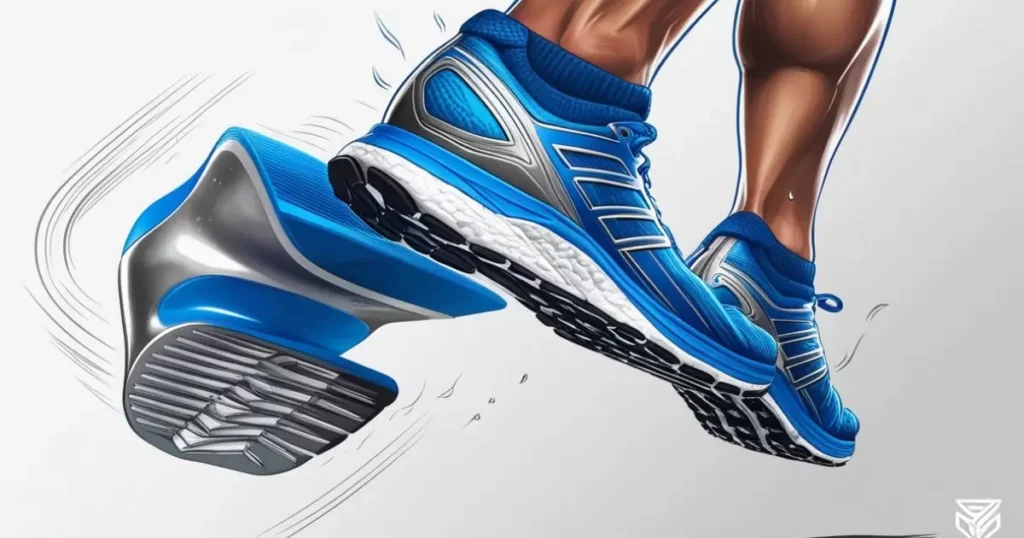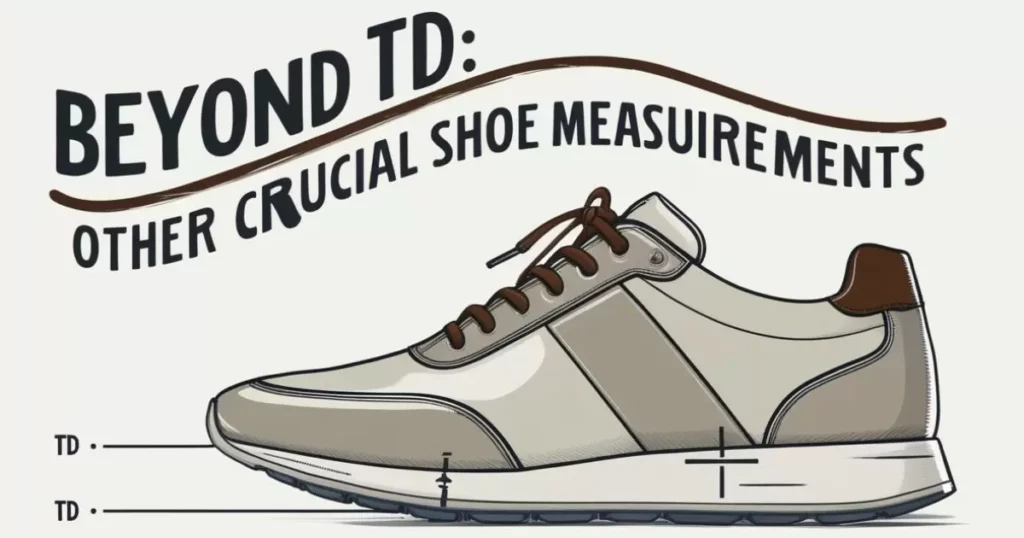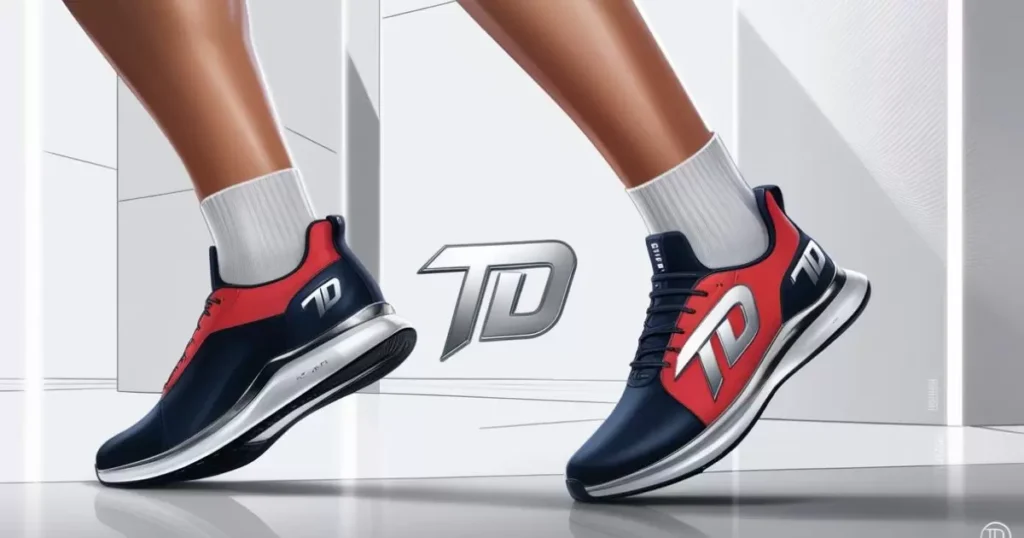Have you ever wondered why some shoes feel drastically different from others, even when they’re the same size? The secret might lie in a little-known measurement called TD, or toe-to-heel drop. This crucial aspect of shoe design can significantly impact your comfort, performance, and even injury risk. Let’s dive into the world of TD and uncover why it matters so much in the shoes you wear every day.
The Origins of TD in Footwear
To understand TD, we need to take a quick trip back in time. Shoe sizing and measurement have evolved dramatically over the centuries, but it wasn’t until the rise of modern athletics that TD became a hot topic.
In the early days of shoemaking, cobblers crafted shoes by hand, focusing primarily on length and width. As mass production took hold, standardized sizing systems emerged, but they still didn’t account for the nuances of shoe design that we now know are crucial for comfort and performance.
The concept of TD gained traction in the 1970s and ’80s as running became increasingly popular. Shoe designers and biomechanists began to realize that the difference in height between the heel and toe of a shoe could significantly affect a runner’s gait and comfort.
“The introduction of TD as a measurable factor in shoe design was a game-changer for the industry,” says Dr. Lisa Fell, a sports podiatrist with over 20 years of experience. “It allowed us to tailor shoes more precisely to different running styles and foot types.”
Breaking Down TD: Toe-to-Heel Drop Explained

So, what exactly is TD? Toe-to-heel drop, often simply called “drop,” refers to the difference in height between the heel and toe of a shoe. It’s typically measured in millimeters and can range from 0mm (no drop) to 14mm or more in some cases.
Here’s a quick breakdown of TD ranges:
- Zero drop (0mm): Heel and toe are at the same height
- Low drop (1-4mm): Slight elevation in the heel
- Medium drop (5-8mm): Moderate heel elevation
- High drop (8mm+): Significant heel elevation
TD affects shoe design and function in several ways:
- Foot strike: A higher drop tends to encourage heel striking, while a lower drop promotes midfoot or forefoot striking.
- Muscle engagement: Different drops can alter which muscles are activated during movement.
- Flexibility: Lower drop shoes often allow for more natural foot flexion.
- Weight distribution: TD can shift your body weight forward or backward, affecting posture and balance.
Measuring TD: The Nitty-Gritty
Professional shoe designers and manufacturers use specialized tools to measure TD precisely. However, curious consumers can get a rough idea with some simple DIY methods.
Professional Measurement Tools
- 3D scanners: High-tech devices that create detailed digital models of shoes
- Calibrated calipers: Precise instruments for measuring small differences in height
- Laser measurement tools: Offer quick and accurate readings
DIY Measurement Methods
- The ruler method:
- Place the shoe on a flat surface
- Put a ruler vertically at the heel and measure to the ground
- Repeat at the toe
- Subtract the toe height from the heel height
- The book method:
- Place the shoe on a book at the heel
- Lift the book until the toe just touches the ground
- Measure the height the book is raised
Remember, these DIY methods aren’t as accurate as professional tools, but they can give you a general idea of a shoe’s TD.
TD Across Different Shoe Types
TD isn’t just for running shoes. It plays a role in all types of footwear, though its importance varies.
Athletic Shoes: TD’s Performance Impact
In athletic shoes, particularly running shoes, TD can make or break your performance.
| TD Range | Typical Use | Potential Benefits |
| 0-4mm | Minimalist running, trail running | Improved ground feel, strengthens foot muscles |
| 5-8mm | All-purpose running, gym workouts | Balance of cushioning and natural movement |
| 8mm+ | Long-distance running, high-impact sports | Extra cushioning, reduced Achilles strain |
Casual Footwear: The Subtle Influence of TD
Even in everyday shoes, TD can affect your comfort and posture. Many casual shoes have a moderate drop of 4-8mm, which provides a balance of comfort and natural foot positioning.
Dress Shoes: Balancing Style and Comfort
Dress shoes often have a higher TD, especially in women’s heels. While this can create a sleek look, it’s important to be aware of the potential impact on foot health with prolonged wear.
The TD Spectrum: From Zero to High Drop
Let’s take a closer look at the different levels of TD and what they mean for your feet.
Zero Drop Shoes: The Minimalist Approach
Zero drop shoes have gained popularity in recent years, especially among barefoot running enthusiasts.
Pros of zero drop:
- Encourages natural foot movement
- May strengthen foot muscles
- Can improve proprioception (awareness of foot position)
Cons of zero drop:
- Requires an adjustment period
- May increase strain on calf muscles and Achilles tendon initially
Low Drop (1-4mm): Finding Middle Ground
Low drop shoes offer a compromise between zero drop and traditional shoe designs.
Benefits of low drop:
- Promotes midfoot or forefoot striking
- Allows for natural foot flexion
- May reduce knee stress compared to higher drops
High Drop (8mm+): Traditional Shoe Design
High drop shoes have been the norm for many years, particularly in traditional running shoes.
Advantages of high drop:
- Provides extra cushioning for heel strikers
- May reduce strain on the Achilles tendon
- Can be beneficial for those with tight calves
TD’s Impact on Biomechanics
The drop of your shoe doesn’t just affect comfort—it can change how you move.
How TD Affects Your Stride
- Low TD: Tends to promote a midfoot or forefoot strike, which can lead to a shorter, quicker stride
- High TD: Often results in a heel strike and may lead to a longer stride length
Potential Benefits and Drawbacks for Different Foot Types
- High arches: May benefit from higher TD for added support
- Flat feet: Often do well with lower TD to encourage natural arch support
- Neutral feet: Can usually adapt to various TD levels
Choosing the Right TD for You
Selecting the ideal TD isn’t a one-size-fits-all process. Consider these factors:
- Activity: What will you primarily use the shoes for?
- Foot shape: Your arch height and overall foot structure
- Personal preference: Some people simply feel more comfortable with certain TD levels
- Injury history: Previous injuries may influence what TD works best for you
Tips for Transitioning Between Different TD Levels
If you’re switching to a significantly different TD:
- Gradually increase wear time over several weeks
- Pay attention to any new aches or pains
- Consider alternating between your old and new shoes initially
- Incorporate foot and leg strengthening exercises
TD and Injury Prevention
Research has shown that TD can play a role in injury prevention, particularly for runners.
A 2018 study published in the Journal of Sports Sciences found that runners who alternated between shoes with different drops had a 39% lower risk of running-related injuries compared to those who used similar drop shoes consistently.
However, it’s important to note that TD is just one factor in injury prevention. Proper training, good form, and appropriate shoe fit are equally crucial.
The Manufacturing Process: TD’s Influence

TD significantly impacts how shoes are constructed.
How TD Shapes Shoe Construction
- Midsole design: The midsole must be crafted to accommodate the desired drop
- Upper construction: The shoe’s upper needs to work in harmony with the TD to provide proper support
- Outsole configuration: The tread pattern and thickness can vary based on TD
Challenges in Maintaining Consistent TD Across Sizes
As shoe sizes increase, maintaining a consistent TD becomes more complex. Manufacturers must carefully scale their designs to ensure that a size 6 shoe has the same effective drop as a size 12.
TD Trends: The Future of Footwear
The world of TD is constantly evolving. Here are some trends to watch:
- Customizable TD: Some companies are experimenting with shoes that allow users to adjust the drop
- 3D-printed midsoles: This technology could allow for more precise TD tailoring
- Variable drop shoes: Designs that incorporate different drops within the same shoe for versatility
Expert Insights: What Podiatrists Say About TD
We reached out to several podiatrists for their professional opinions on TD. Here’s what they had to say:
Dr. Mark Stevens, Sports Podiatrist:
“There’s no one-size-fits-all when it comes to TD. I often recommend that my patients try shoes with different drops to see what feels most comfortable and causes the least discomfort during their activities.”
Dr. Sarah Chen, Biomechanics Specialist:
“While TD is important, it’s just one piece of the puzzle. Factors like overall shoe fit, arch support, and the specific needs of the individual are equally crucial in finding the right shoe.”
When to Consult a Specialist About TD-Related Issues
Consider seeing a podiatrist or sports medicine doctor if:
- You experience persistent pain when wearing shoes with a particular drop
- You’re recovering from an injury and need guidance on appropriate footwear
- You have a specific foot condition that may be affected by TD
Beyond TD: Other Crucial Shoe Measurements

While TD is important, it’s not the only measurement that matters in shoe design.
Stack Height: The Forgotten Sister of TD
Stack height refers to the total amount of material between your foot and the ground. It includes both the midsole and outsole.
Why stack height matters:
- Affects overall cushioning
- Influences ground feel and stability
- Can impact energy return
Heel Cup Depth and Its Relationship to TD
The depth of the heel cup can interact with TD to affect overall fit and comfort.
- A deeper heel cup with a lower TD can provide stability
- A shallower heel cup with a higher TD may offer more freedom of movement
TD Myths Debunked
Let’s clear up some common misconceptions about TD:
- Myth: Zero drop shoes are always better. Fact: The best drop depends on individual factors and preferences.
- Myth: High drop shoes cause injuries. Fact: While drop can influence biomechanics, many factors contribute to injuries.
- Myth: You can’t run fast in low drop shoes. Fact: Many elite runners perform well in low drop shoes.
- Myth: Changing TD will instantly fix running problems. Fact: Proper form, training, and overall shoe fit are equally important.
FAQS
1. Q: What does TD stand for in shoe sizing?
A: TD typically stands for “Toddler” in shoe sizing.
2. Q: What age range do TD shoes usually fit?
A: TD shoes are generally designed for children between 1 to 4 years old, though exact age ranges can vary by brand.
3. Q: How does TD sizing compare to other children’s shoe sizes?
A: TD sizes usually come after infant sizes and before youth sizes. They typically range from about size 4 to size 10.
4. Q: Are TD shoes different from adult shoes in any way besides size?
A: Yes, TD shoes are often designed with features specific to toddlers, such as more flexible soles, wider fits, and easy-to-use closures like velcro.
5. Q: Can I find TD sizes in all shoe brands?
A: While many major shoe brands use TD sizing, not all do. Some may use different terminology or sizing systems for toddler shoes.
Conclusion: Finding Your Perfect TD Match
Understanding TD is just the first step in finding your ideal shoe. Remember:
- Consider your activities, foot type, and personal comfort
- Don’t be afraid to experiment with different drops
- Transition gradually when trying a new TD
- Listen to your body and seek professional advice if needed
By taking TD into account along with other factors like fit, cushioning, and support, you’ll be well on your way to finding shoes that keep you comfortable and performing at your best.

An author is a creator of written content, producing works ranging from books and articles to blog posts and essays. They use their creativity, knowledge, and research to inform, entertain, or persuade readers. Authors often have a unique voice and perspective, contributing significantly to literature and various media.

